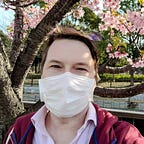People are very excited to see designer manhole covers in Japan, which started being introduced in Okinawa in 1978; today there are many thousands of them scattered around the country. A good article on the history is Designer Manhole Covers: A New Kind of Region-Specific Item:
Designer manhole covers first appeared in Japan in 1977, at Naha City. They featured a design of happy fish in water that had been cleaned by the sewer system. This initiative drew attention, and so designer manhole covers came to be promoted to inform people about the sewer system and to give the sewers a good impression. These covers began to be produced with colors in 1981.
If this is your thing, there are hobbyists called “Manholers” (マンホーラー) who have made a game of collecting official painted manhole cards, which can be obtained for free at specific locations, and which have on them printed instructions you must follow to lead you to the manhole’s location. It’s a bit like geocaching or a stamp rally.
Manholers can also download the City Guardians game, which is similar to Ingress or Pokemon Go for manhole-fans, complete with maps to the artworks.
For anime/Pokemon lovers, don’t dismay! There are Pokémon Utility Hole Covers in Japan, and fortunately they have an English Poké Lids website where you can read up on how to catch them all.
For myself, I find a lot of pleasure in stumbling across painted manhole covers organically (so far), elevating sewer utility infrastructure into local history and art guides. Here are a few I’ve seen recently:
Atami Plum Garden — I am not sure what this is the 8th anniversary of, but Atami has a rich history of the plum gardens (150 years) and onsen / hot springs have existed there for surely as long.
NIKKO おすい written here means “Nikko Sewage” and features one of the Fujiwara (藤原) clan descending the Kinugawa river (鬼怒川).
This beautiful manhole cover features the Chiba city flower “Ooga lotus” (大賀ハス), the city tree “Zelkova” (ケヤキ), and the city’s symbolic bird “Koa tern” (コアジサシ). The mark in the center is the communication mark of Chiba City representing the 6 wards.
These Hakodate enamelled manhole covers mainly cover two themes — famous local landmarks and historical buildings, and the fishing industry and popular sea-birds, fish, squid, and other ocean creatures.
The town emblem, with Mt. Asama emitting a plume of smoke in the center and the “ka” of Karuizawa, is surrounded by birch trees.
Sagamihara City (left) has a design featuring the Sagamihara lake dam and mandarin ducks, (right) another city zelkova tree and the word “Sagamihara Sewage” at the bottom.
If you’re interest in art manhole covers has been piqued, I recommend you check out this amazing production video:
And also give On the Hunt for Japan’s Elaborate, Colorful Manhole Covers a quick read through, it has some lovely ones.
And there is an online database for cataloguing them (in English), not just in Japan but abroad. Currently with about 150 domestic examples.
If your Japanese is good or you can use translation tools, 日本マンホール蓋学会 (Japan Manhole Cover Society) has a huge, huge location-catalogued 1995-styled website chock-full of manhole covers and explanations. It is still being updated as frequently as TODAY as its authors discover new manholes. Incredible:
